Canning strawberries is an easy way to enjoy them all year round in your favorite desserts and more.
If you are lucky to have an abundance of fresh strawberries from your garden, canning them is one of the best ways to use them up before they go bad.
Canned fresh strawberries are great for making compote, sauces, dessert fillings, jam, and more.
Below I’m going to show you how to can strawberries the right way, including lots of tips so that you will have the best success.
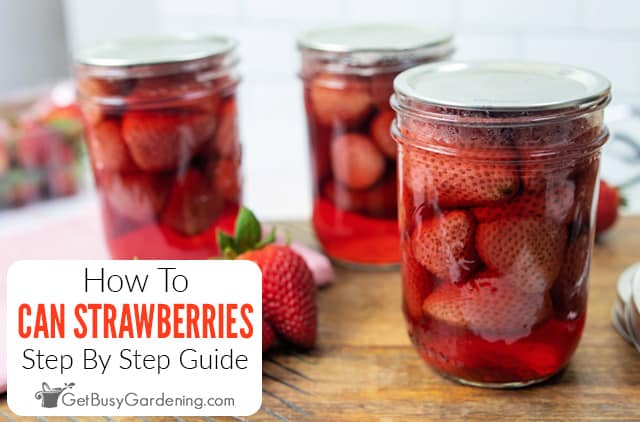
Can You Can Strawberries?
Many people often ask if you can can strawberries, and the answer is yes. It’s actually very easy too.
They’re a great cupboard staple to have on hand so you can make delicious dessert fillings, baked goods, and more whenever you want.
Best Types Of Strawberries For Canning
For optimal canning results, the best strawberries to use are ones that are fresh, ripe, and firm.
Avoid canning unripe strawberries with white or green patches, as they will not preserve well and will lack flavor.
The freshest strawberries will be the most delicious, while also preserving their structure during the heating process.
Related Post: How To Grow Your Own Strawberries
Preparing Strawberries For Canning
All you need to do to prepare your strawberries for canning is to rinse and strain them, then cut off the green tops.
It’s best to use some sugar in the prepping process. Simply sprinkle it over your freshly washed and cut strawberries and let them sit in a bowl.
The sugar will pull the juices out naturally, as well as making the fruits sweeter, and keeping them firmer after processing.
Related Post: How To Can Strawberry Jam (With Recipe!)
Methods For Canning Strawberries
You can can strawberries by either hot or raw packing them. The method you choose will depend on the amount of time you have, as well as how you plan to use them later on.
Hot Packing
With hot packing, you flash-cook the strawberries and their juices for 1 minute before canning them.
The pros for using this method are that it helps maintain the color and flavor better. But it takes slightly longer, since you have the added step of cooking them.
This is ideal if you plan to use your strawberries in desserts and dishes where presentation and color matters.
Related Post: How To Make Strawberry Jelly: Easy Recipe
Raw Packing
For this method, you put the raw strawberries into the jars, then add in hot juice, syrup, or water.
Though this method is slightly faster, the flavor and color of the fruit won’t be maintained as well or as long.
But that may not be a big deal if you’re planning to use them in recipes where appearance isn’t important. For example, inside of pies or blended into smoothies.
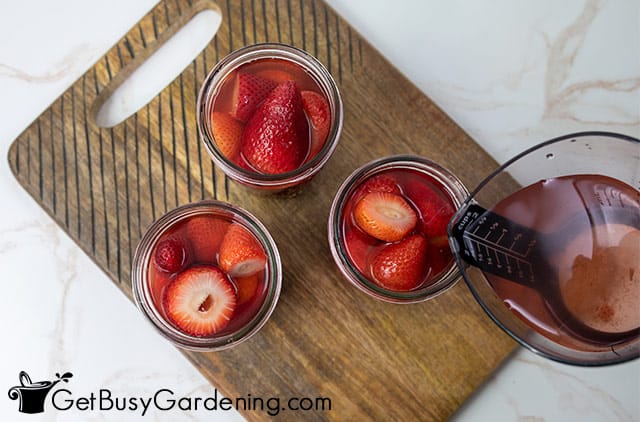
Water Bath Canning Strawberries
The best processing method to use for canning strawberries is a boiling water bath. This is safe because strawberries are naturally acidic.
Simply process them in your water bath canner for 10 minutes. A pressure canner is too hot, and the extreme heat can break down the delicate fruits.
Tools & Equipment Needed
Below is a list of items you’ll need. Gather everything before you start to make the process easier. You can see my full list of tools and supplies here.
- Water bath canner
- Pint canning jars
- OR Quart sized jars
- New jar lids
- Paring knife
- Cooking pot
- Canning funnel (optional)
- Ladle
- Measuring spoons
- Bubble remover tool
- Jar lifting tool
- Dissolvable labels
- OR Permanent marker

How To Store Canned Strawberries
It’s important to store your canned strawberries in a cool, dry, and dark place, such as in a pantry or cupboard.
But first, check each lid to make sure it has a tight seal. If any of them didn’t seal after processing, then put those into the fridge and eat them up within a week.
How Long Do Canned Strawberries Last?
Canned strawberries will last for 12 months when stored properly. Once the jars are open, they will last about 1 week in the fridge.
Ways To Use Canned Strawberries
There are so many delicious ways to use canned strawberries. Here are a few of my favorites.
- Fruit compote – This can be used on top of pancakes and waffles or stirred into your oatmeal or yogurt.
- Pie filling – Add more sugar to create a delicious pie filling, topper for ice cream, or cheesecake.
- Drinks – Use them in smoothies, shakes, mocktails, or homemade soda and lemonade.
- Baked goods – You can use canned strawberries instead of fresh in any of your favorite baked goods.

FAQs
Below are answers to some of the most frequently asked questions about the canning process in strawberries.
Can whole strawberries be canned?
Yes, whole strawberries can be canned. They taste the best when a little sugar is added to them so that they maintain color and flavor.
Can you can strawberries without sugar?
Yes you could can strawberries without sugar, and instead use juice or plain water. However the drawback is that the color and flavor will leach out into the brine liquid, resulting in mushy strawberries with less flavor.
How many strawberries fit in a canning jar?
You can fit about 1 to 1 ½ pounds of whole cored strawberries in two pint jars or one quart jar.
If you’d like to learn how to make the most of your space and get as much homegrown food as possible, then my Vertical Vegetables book is perfect! It will teach you all you need to know, has tons of gorgeous photos, and includes 23 DIY projects you can build for your own garden. Order your copy today!
Learn more about my Vertical Vegetables book here.
More Food Canning Posts
- Canning Blueberries: Easy Recipe
- How To Can Blueberry Jam (With Recipe!)
- How To Can Pears
- How To Can Apples
- How To Can Rhubarb
Share your tips for canning strawberries in the comments section below.
Recipe & Instructions
How To Can Strawberries
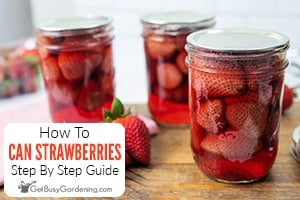
Canning strawberries is an easy way to preserve the fruits from your garden's bounty and enjoy them all year round. Use them in your favorite desserts, pastries, drinks and smoothies, or stir them into your oatmeal or breakfast pancakes, and so much more.
Ingredients
- 3 pounds of strawberries
- ⅓ cup of sugar
Instructions
- Prepare the strawberries - Wash and hull the strawberries. Place them in a bowl and sprinkle the sugar over the top, then stir to evenly distribute. Cover the bowl and store in the fridge for 6 hours to allow the fruits to macerate and create their own juice.

- Prepare the canner - Fill your water bath canner and place it on high heat on the stove to boil.
- Simmer the strawberries: Pour the strawberries and their juices into a cooking pot, then place it on the stove and simmer for 1-2 minutes. Take care not to overdo it. You just want them to get hot, not to cook the strawberries, or they will get mushy.

- Pack your jars - Use your canning funnel and ladle to fill the jars with the hot strawberries. Then cover them with the hot juice liquid, leaving 1/2 inch headspace on top. Use your bubble remover tool to pop any bubbles before sealing the lids finger tight.

- Process the jars - As you fill the jars, use your lifting tool to place each one into the hot water bath canner. Once full, process the pint jars for 10 minutes or 15 minutes for quart jars.

- Cool - Turn off the heat and allow the jars to rest in the canner for 5 minutes. Then remove them and place them on a towel on your counter or table to cool for 24 hours.

- Store them - Remove the bands and check that each lid is sealed. Then write the date on the lids with a permanent marker or use a dissolvable label, and store the jars in a cool dark place.

Notes
- If you don’t have enough juice to can your strawberries, you can make some light syrup by using 2 cups of water and ¼ cup of sugar. Bring it to a boil until the sugar is fully dissolved.
- It's important to keep the jars hot at all times. So plan ahead and boil the processing water before filling them, then place them in there as soon as they are packed.
- Also, be sure to work fairly quickly to pack your jars so they do not cool down before processing them.
- Don't be alarmed if you hear the random pinging sounds as the jars cool, it just means the lids are sealing.
- If you live at an altitude higher than 1,000 feet above sea level, then you'll need to adjust your pressure pounds and processing time. Please see this chart for the proper conversions.
Nutrition Information:
Yield:
6Serving Size:
1 cupAmount Per Serving: Calories: 115Total Fat: 1gSaturated Fat: 0gTrans Fat: 0gUnsaturated Fat: 0gCholesterol: 0mgSodium: 2mgCarbohydrates: 28gFiber: 5gSugar: 22gProtein: 2g


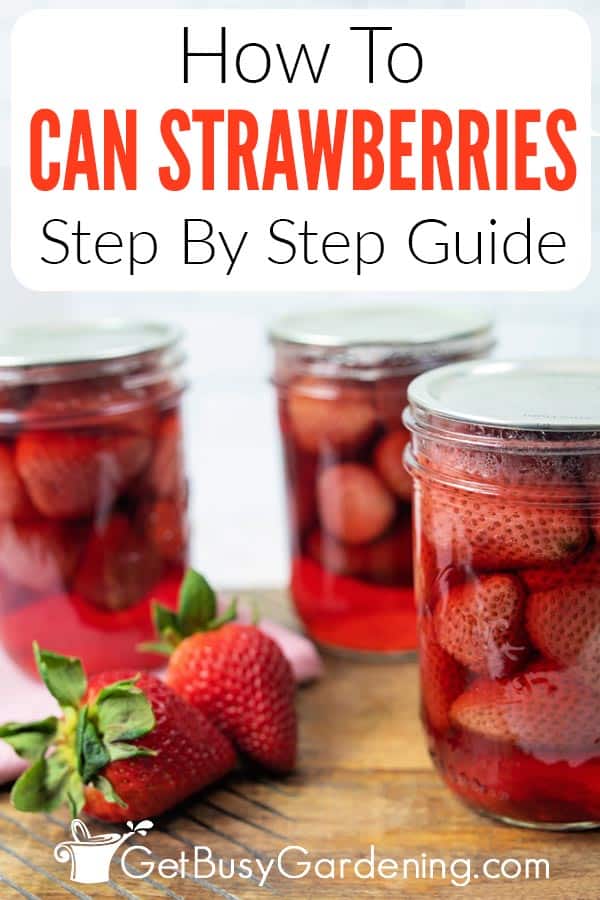

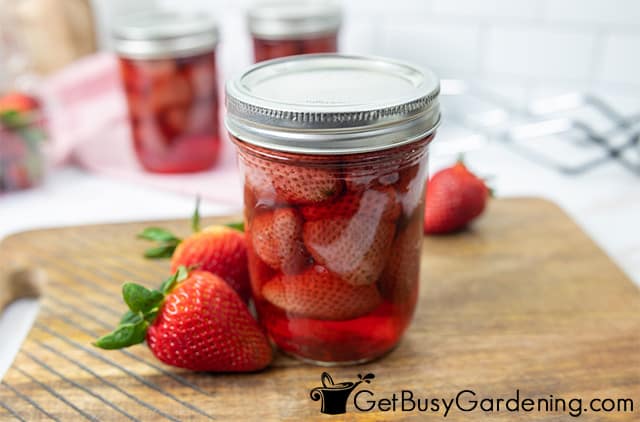
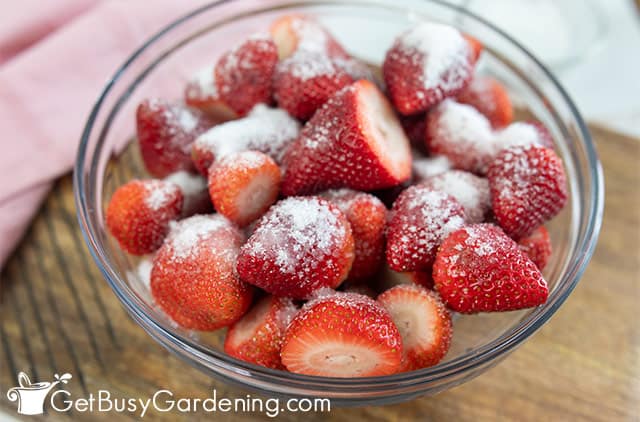

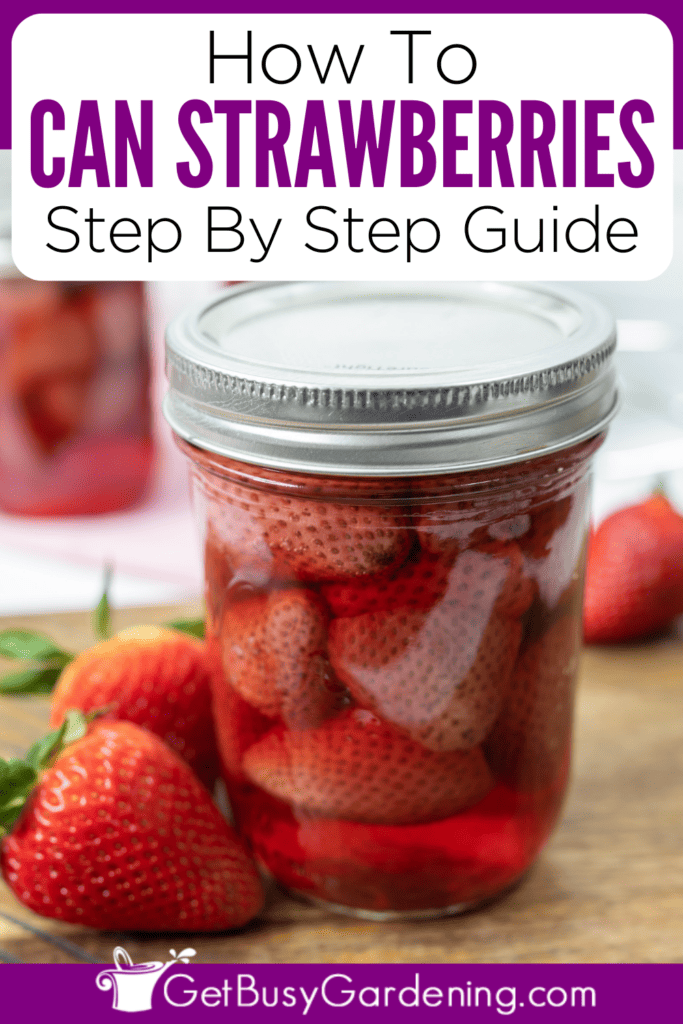
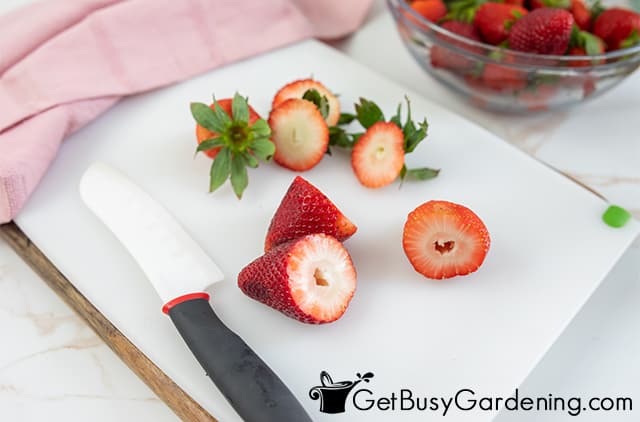
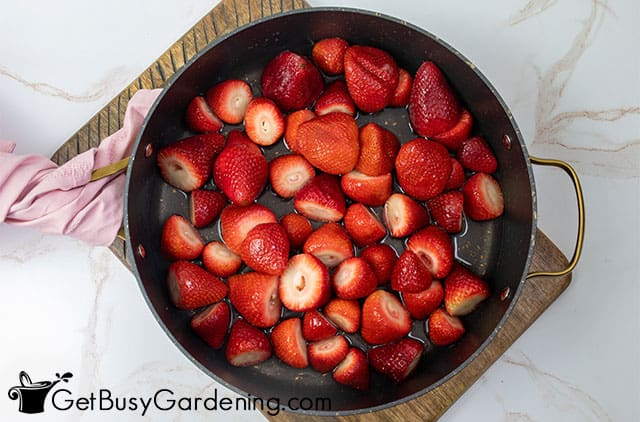
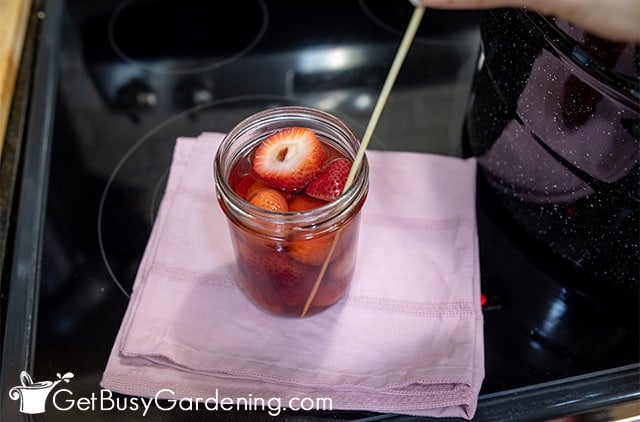
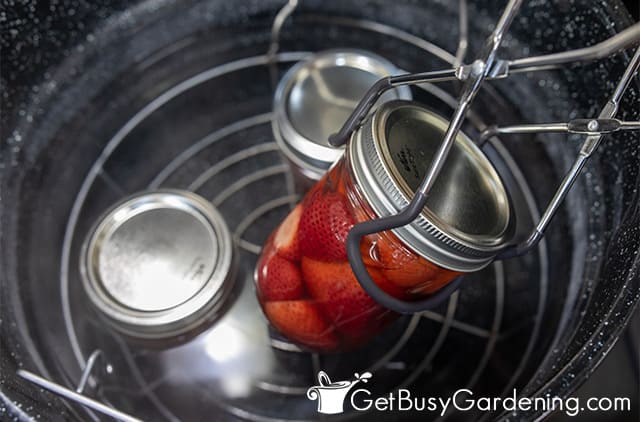
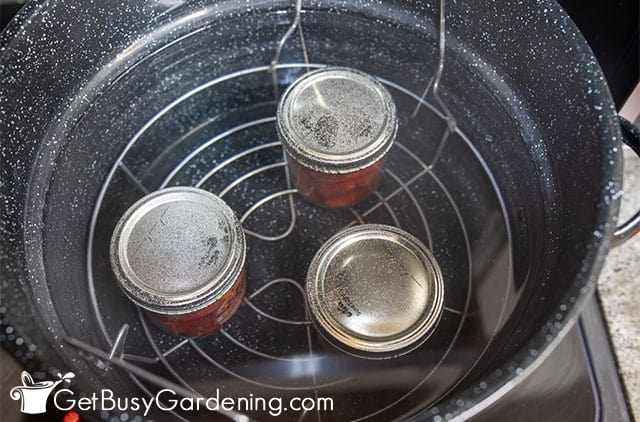


Leave a Reply